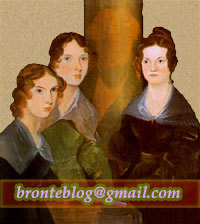The Brontë museum has suggested that Heathcliff may have been black.
Heathcliff features as the brooding anti-hero in Wuthering Heights, a tale of passion that shocked the Victorian public when it was published in 1847.
Emily Brontë described him as darker than other characters in the novel but not explicitly black, with comparisons to a “dark-skinned gypsy” or a Lascar – a south Asian sailor. However, Heathcliff is also described at times as “pale” and possibly “Spanish”.
On screen, the character has been played principally by white actors, including Laurence Olivier in 1939, but in 2011 the roles of the old and young Heathcliff went to the black British performers James Howson and Solomon Glave.
The debate over ethnicity of the character has been reignited following the decision to cast the white actor Jacob Elordi in the role for a forthcoming film.
The Brontë Parsonage in Haworth, once the Yorkshire home of Emily, Anne and Charlotte Brontë and now a museum dedicated to the authors, has set out the case for Heathcliff being a man of “black African descent”.
The argument has been advanced by the Brontë Society, which controls the Parsonage museum, following a commitment to diversity and inclusion. Information on its website suggests Heathcliff may have been inspired by a black abolitionist and former slave.
It states that while the character’s ethnicity remains a mystery, there are clues “linking him to the transatlantic slave trade”.
A resource on the official Parsonage website, titled Black History, states: “The fact that Heathcliff is found in Liverpool, described as an orphan with no ‘owner’ or ‘belonging’ to anybody, opens up the possibility that Heathcliff could have black African descent, having been brought to Liverpool through the slave trade.”
It also adds that Brontë may have based Heathcliff’s appearance on that of Frederick Douglass, the black American abolitionist, who was a renowned figure at the time the novel was written.
To further support the idea, parallels are drawn between Heathcliff’s brutal upbringing in the eponymous home, Wuthering Heights, and the treatment of slaves.
It states: “This forced endurance of misery and beatings is an experience that can be compared to that of enslaved people across the colonies… Heathcliff is ‘flogged’ like an enslaved person by Hindley, and the entire family contributes to this prejudice.”
The society added that “it’s interesting that Emily chose to set Wuthering Heights in a time when the transatlantic slave trade was a large part of the economy in Britain”. [...]
The Parsonage’s intervention in the debate over Heathcliff’s race comes ahead of a conference, set for autumn, that will address how the Brontë sisters are linked to “Empire and Western colonialism”. Research will tackle issues including “racialisation” and “whiteness” in the works of the literary family.
The Brontë Society said that the theme was chosen at a time when “continued efforts to decolonise the curriculum and museums are being made”.
The links to the colonial world in the works of the Brontës include Heathcliff’s debated race, and the character of Bertha Mason, who hails from Jamaica, in Charlotte’s 1847 novel Jane Eyre.
A spokesman said: “The subject of colonial connections often comes up in our work at the Brontë Parsonage Museum and in discourse with our audiences. It’s a topic that we regularly address in our learning programme and will be a focus of this year’s Brontë Society Conference for the first time.”
The conference will also debate the character Quashia Quamina, a black figure who featured in the imaginary world of Angria, which Charlotte devised. (Craig Simpson)
Which is hardly a definite answer to the long-debated riddle of Heathcliff's identity. It is and has always been interesting to debate about this kind of question in books and it's getting quite tiring that this black-or-white vision imposed on society will no longer allow for debates that have been natural and not-so-political up until now. Just as we defended Emerald Fennell's right to her own vision of the novel we will defend the Brontë Society's right to take a point of a Brontë novel and discuss it, never claiming that it is the only possible interpretation. Even more so when it is hardly a new point, but one which has been debated peacefully for decades with no sensationalising interventions from the press.









Heathcliff sires a son with pale skin, blonde hair and blue eyes. This means he would have a recessive blue-eyed gene. Also, Jacob Elordi has a Basque bloodline which is in tune with Heathcliff being able to pass as a Spanish castaway. Read more at https://rebelliousmagazine.com/emerald-fennell-wuthering-heights-2026-film/
ReplyDelete